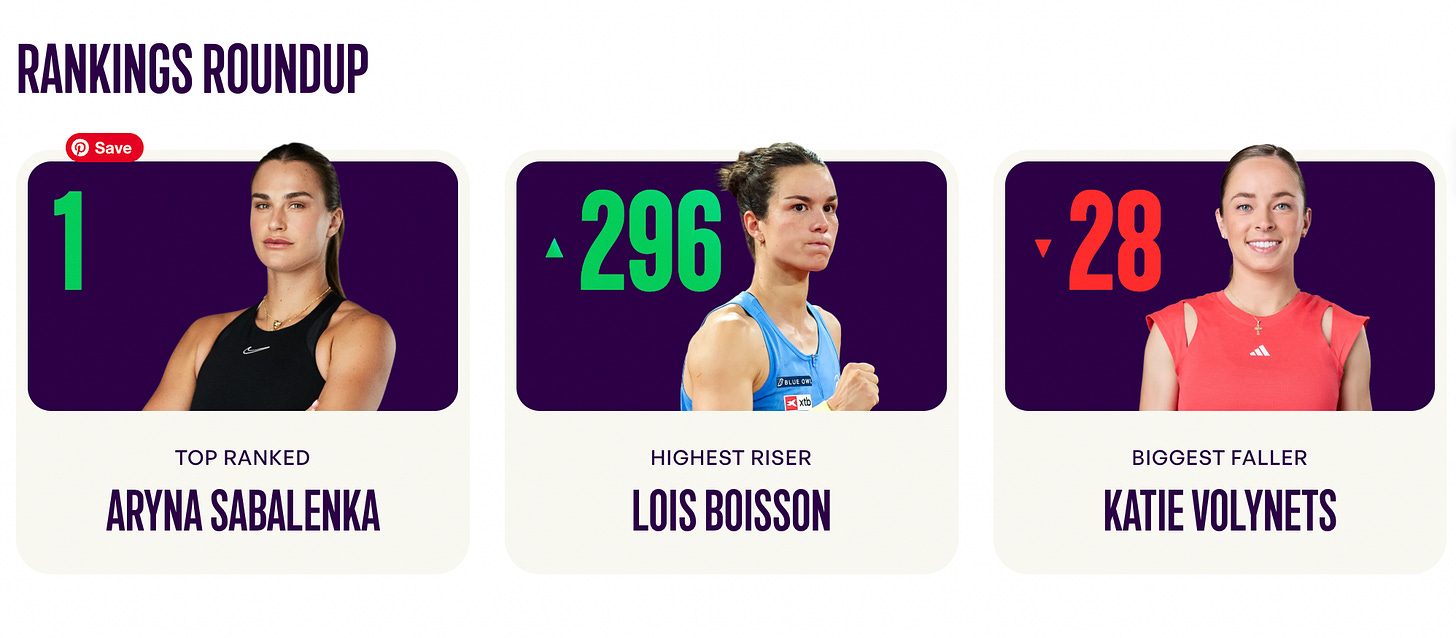The Lloyds: Kingmakers of British Tennis
Plus, the women's get treated like Queens again before another Robin Hood tourney in Nottingham
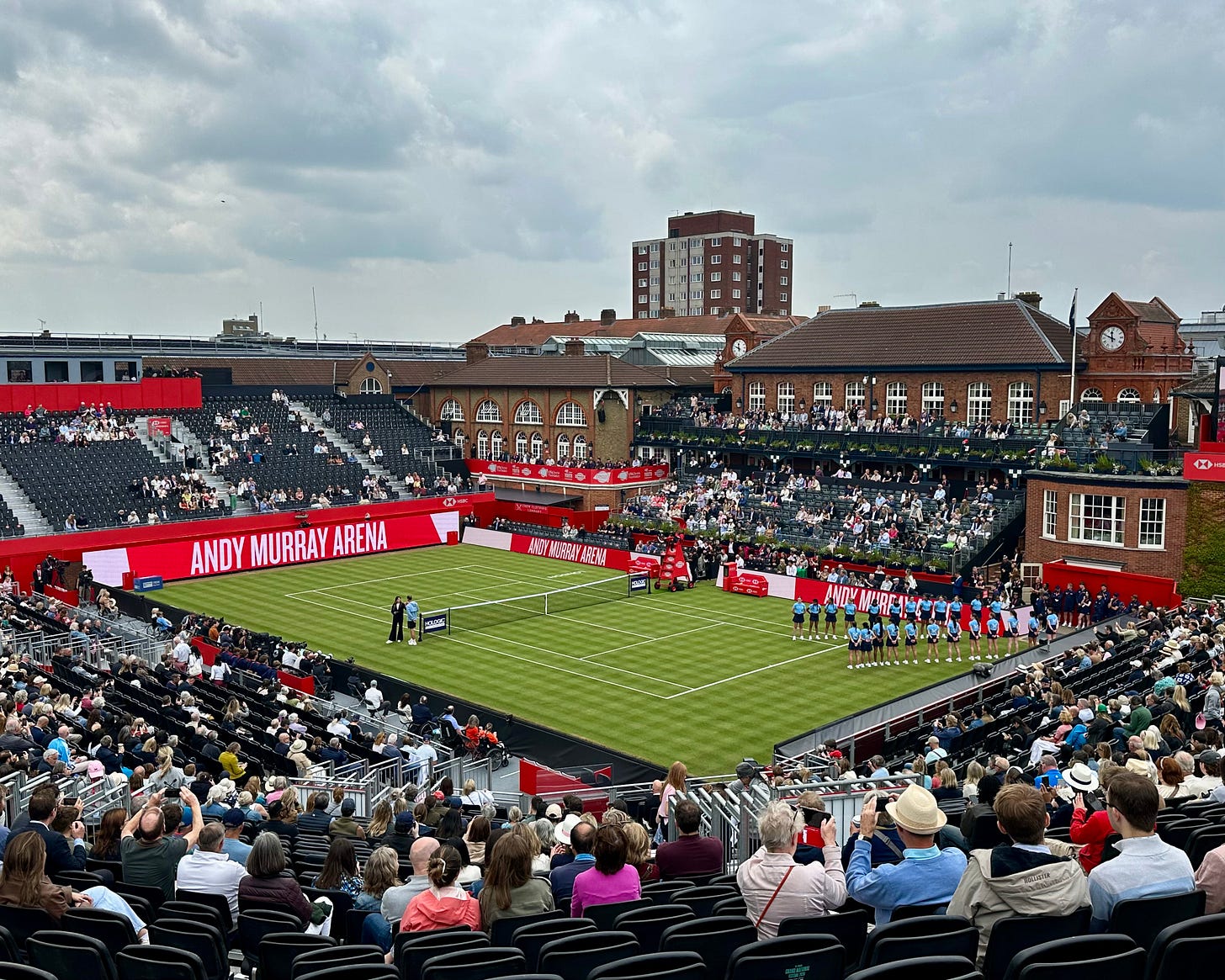
Before Tim Henman with his hill at the All-England Lawn Tennis Club (AELTC) and Andy Murray with the new arena named for him at the Queen’s Club, there was John Lloyd, otherwise known as Mr. Chris Evert. But while the luminaries of the sport were busy racking up their wins, John Lloyd got busy acquiring stories for his punditry and resources for his family’s power over the LTA.
In his time, however, John Lloyd did manage to outshine the rest of the Lloyd family on court: the handsome boy from 1960s Westcliff Hard LTC near Southend-on-Sea, Essex reached a career-high ATP ranking of 23 in 1978, and became England’s top player from1984-85 — the handsome Jack Draper of his time.
It was Lloyd’s good humor, charm and ability to tell a story that convinced the sports punditry world to take him on air when he retired from the tour in the late 1980s. But John Lloyd, while not exactly having a poker face, held an ace in the hole: his brother, David. For John’s stunning good looks, David had the smarts. For John’s mastery of strokes, David had the strategy to win. For John’s charm, David had the vision and the business sense.
Although both Lloyds were members of Great Britain's Davis Cup squad, (David played on-and-off between 1972 and 1980 — part of the first British team to reach the final since 1937), John claimed the name fame, while David worked behind the scenes. He retired from professional tennis and became a tennis coach in Canada. Later, at the Lawn Tennis Association (LTA), he turned a young Tim Henman from an Oxford-born-and-bred descendant of Wimbledon greats to a Wimbledon hero himself.
But even before he found Henman,David Lloyd had already founded a gym-and-tennis empire: the David Lloyd Leisure Clubs, with a focus on not only tennis, but also the general fitness needed for tennis. That empire has come to define English tennis.
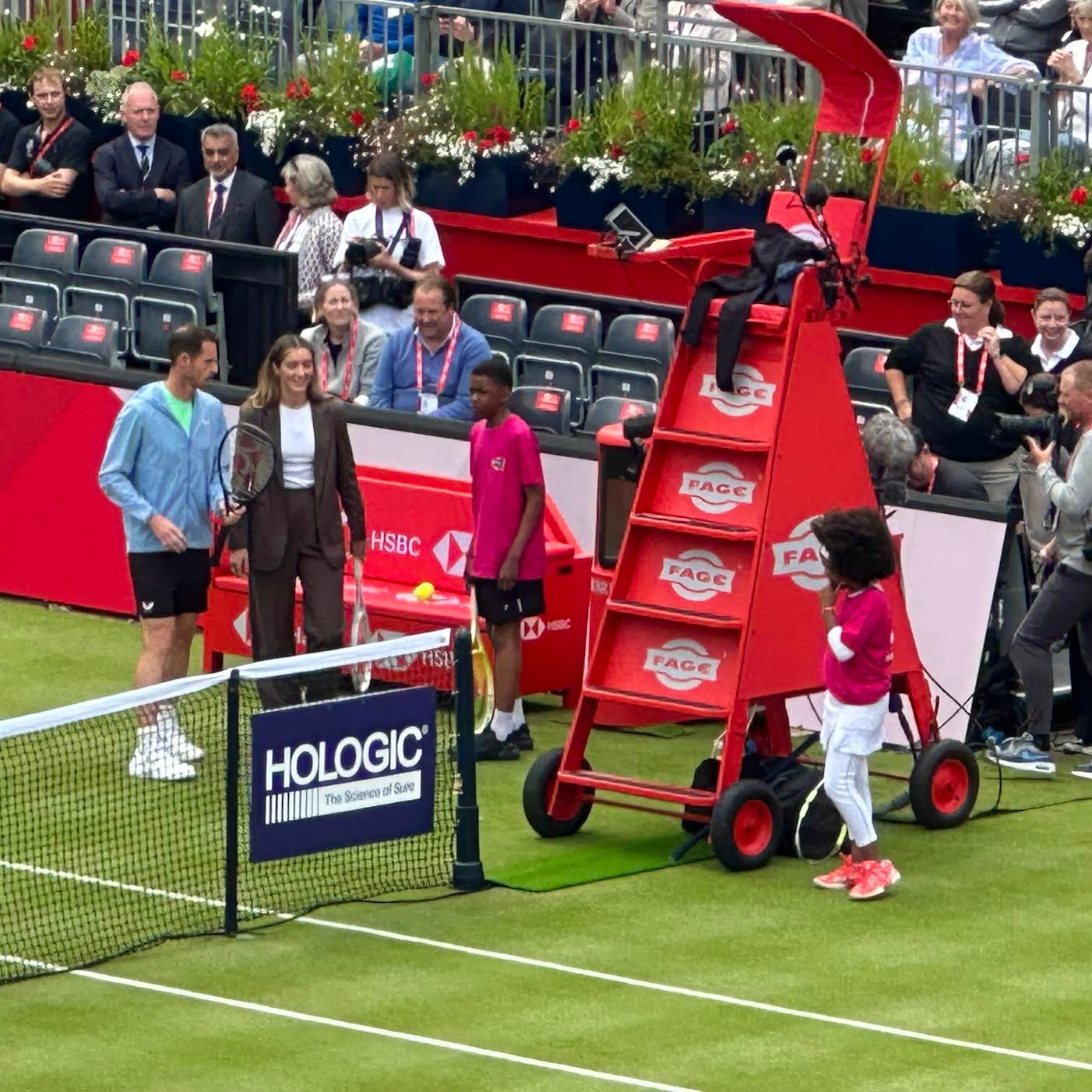
David Lloyd opened his first club near Hounslow in West London in 1982. It’s growth from there is the stuff of English legend — even more so than Buster Mottram’s “shanked” serve into the Royal Box in 1978. By 1995, all 18 David Lloyd Leisure clubs were acquired for £200 million, and David Lloyd, together with his son Scott, created the Next Generation David Lloyd fitness clubs and sold those in a separate deal worth £925 million. By 2019, David Lloyd’s name was on 89 UK and European Leisure Clubs, joined by two Harbour Clubs and five David Lloyd Studios, with a membership of around 440,000. Tennis plays a large part in most.
But the Lloyds were not happy with a chain of fitness clubs loosely associated with tennis. They wanted English tennis domination. They wanted to run, if not own, the LTA. But first…
The Women Return to become Queen’s:
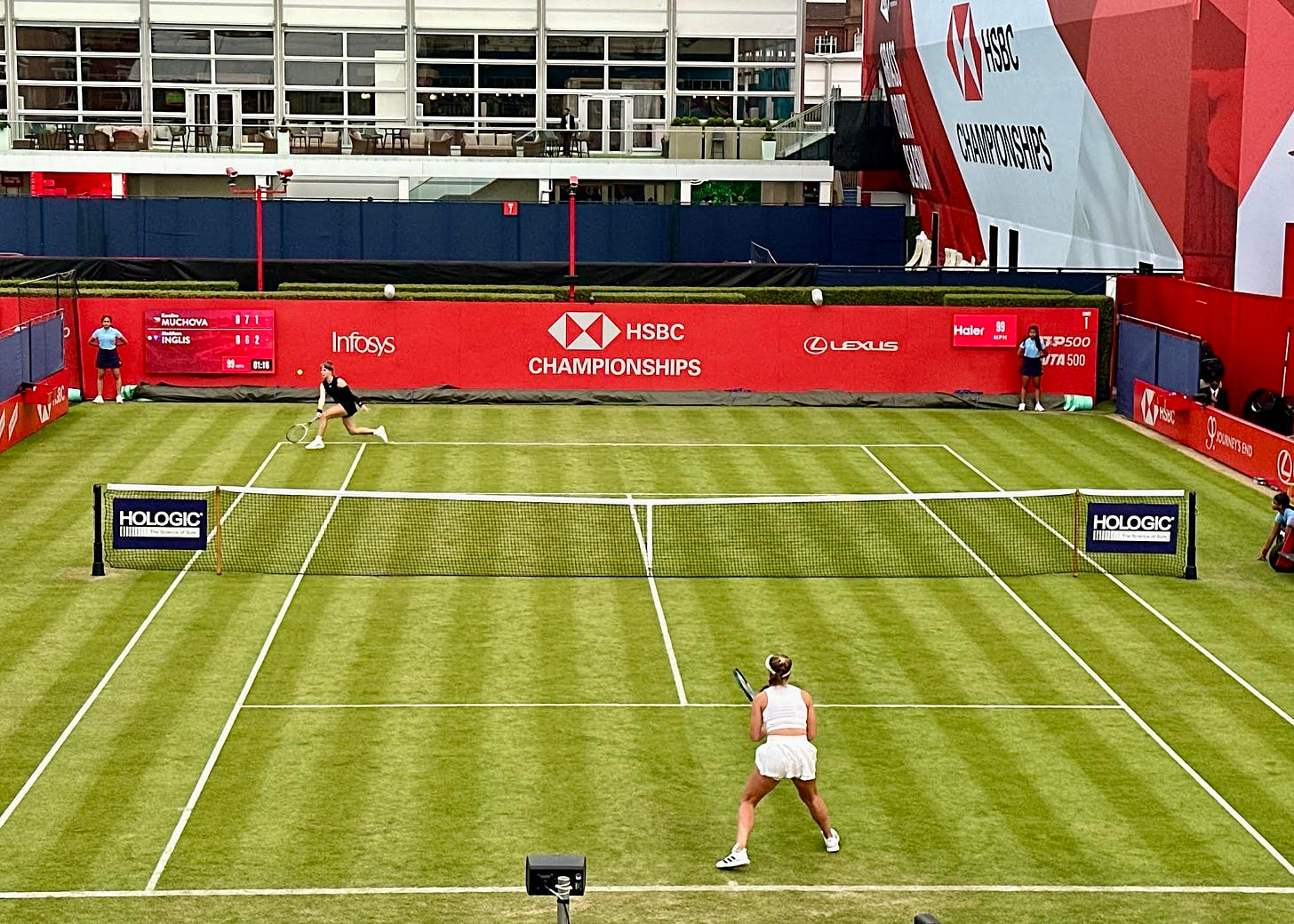
For the first time in 52 years, the LTA — now run by David' Lloyd’s son, Scott Lloyd (more on that later) — has given women a platform at the prestigious and pristine grass courts at the Queen’s Club in the high-flying west London neighbourhood of Baron’s Court. It marks a sea change in the effort to get more women to play the grass court warm-ups in the UK over Germany and some of the other European cities. Before 2025, the women had mostly lower-tier events — just a slot above Challenger (or minor league) in Nottingham and Birmingham — while the men were wined and chillaxed at the Queen’s legendary Victorian clubhouse. Not since 1973 had pro women touched Queen’s grass, where Russian Olga Morozova won the last Women’s London Grass Court Championships and Billie Jean King and Rosie Casals took the doubles title, just months before BJK’s “Battle of the Sexes” — the exhibition that sent her star beyond the earth’s atmosphere.
And who else besides Andy Murray, champion of women’s tennis and for whom Queen’s named its show court, could kick off the beginning of the historic event, engineered by pal and tournament director, Laura Robson. Following a slightly awkward coin toss and mock game with two LTA youth, former Eastbourne champ and returning mother Petra Kvitova (WTA No. 574) got off to a strong start, but was eliminated in the first round by Beatriz Hadad Meier (WTA No. 22). A newly patriated and freshly engaged Daria Kastakina (WTA No. 16) also exited in the first, with a loss to Brit Sonay Kartal (WTA No. 50) — look out Katie and Emma or “Boultercanu” (their doubles nickname). American Amanda Anisimova (WTA No. 15) gave Jodie Burrage (WTA No. 162) a glimmer of hope before cleanly knocking her all the way to the Tower of London.
But by the end of the week, it was “Boultercannot” as the pair lost in doubles and each team member lost their singles, including Raducanu’s defeat at the hands of Qinwin Zheng (WTA No. 6), who informed English pundits of yet another new way of pronouncing her name. Predictions have an all-American final of Madison Keys (WTA No. 8) against Anisimova, despite the presence of another Queen-killer, 37-year-old Tatiana Maria (WTA No. 86), as the surprise Sunday roast.
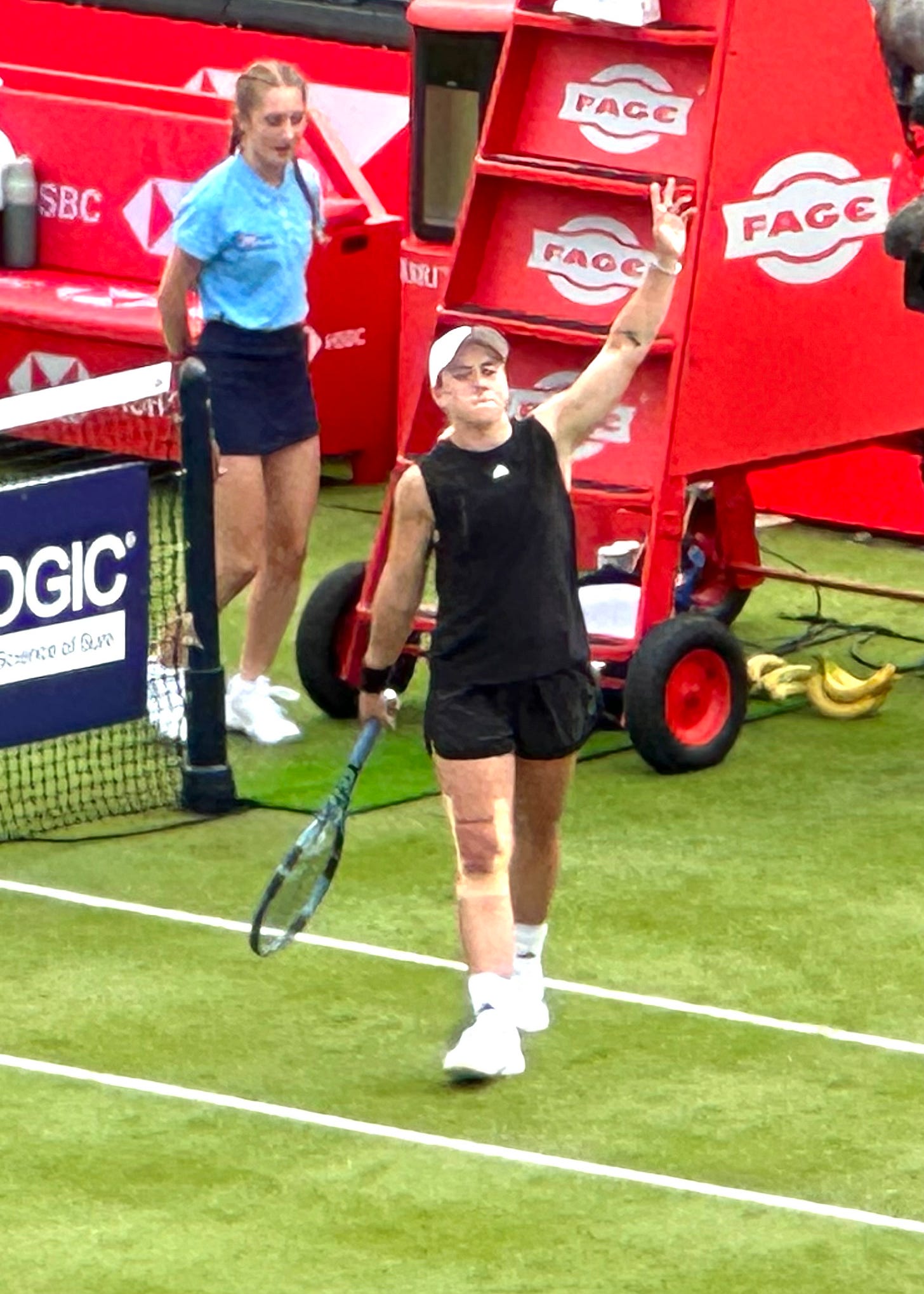
Back to the Lloyds:
In addition to the rethink and reshuffle of tournaments, the LTA has experienced its own top-tier whirlwind in recent years. As the David Lloyd Club teams began their ascent toward the yearly championships — Raynes Park, Sunderland, Bristol and Finchley — often competing with the likes of pro players from Sutton, Roehampton, Edgbaston Priory, West Hants and Cumberland, so did heir to the Lloyd throne, Scott Lloyd, overtake the LTA’s CEO spot. Although technically running a non-profit organization and a national governing body for tennis in Great Britain whose “primary goal is to develop and promote the sport,” Scott Lloyd, has approached the job with the bottom line in mind — and making sure his Brits to Back get their lion’s share of resources.
The LTA has also awarded David Lloyd clubs and its coaches significant accolades. David Lloyd - Long Ashton won club of the year in 2023, David Lloyd Southampton won the award in 2009, and many others win the regional awards. Meanwhile, David Lloyd Leisure advertises for tennis coaches on the LTA website and David Lloyd Club coaches frequently win High Performance coach of the year and other kudos.
In 2018, Lloyd launched the LTA’s vision of Tennis Opened Up with a five-year strategy to grow the game and reverse the decline in participation. By December 2023 annual participation had grown by 44 percent (a Covid boost can’t be discounted), nine British players were in the Top 100 — the most since 1978 — and the LTA’s database of tennis fans had tripled to 1.5 million. The organisation also embarked on a major project to improve 3,000 tennis courts in parks across Britain by issuing “tennis kits” to would-be coaches if they want to gather up some local kids for a hit. Meanwhile, the David Lloyd Clubs looked to profit heavily in the recent Padel tennis explosion to hit London.
Two years later, the LTA has the new Andy Murray in Jack Draper, (ATP No. 5 and the son of Roger Draper, another former LTA CEO) and only three British men and three British women in the Top 100. This compares to 18 American women and 13 American men in the same set of rankings — not to mention three American women and two American men in the Top 10. Although Lloyd has acknowledged the LTA still has “a long way to go” in building a more diverse sport, he also told Sky Sports that “the diversity of our player base broadly reflects the ethnic diversity in this country, and we’re also proud of the fact that gender equality in tennis has led the way relative to many sports.” Yet of three female Brits in the top 100, two are of mixed race, while six of the 18 American women identify as Black, including Hailey Baptiste, a proud Haitian American and the initial product of a tennis and education programme in her native Washington. Of the 13 American men in the ATP Top 100, two are Black and two are Asian. All the three British men in the Top 100 are white.

Moreover, in 2019, Scott Lloyd who agreed to terminate many interests in the David Lloyd Clubs when he became LTA chief, was still drawing a salary and holding 0.4 per cent stake in the David Lloyd clubs, despite a LTA salary of £421,000 per year from the publicly-funded body. Lastly, per an agreement with the AELTC, the 2024 Wimbledon Championships delivered a “record surplus” of nearly £50 million ($68 million) for British tennis — or 90 percent of its profits. But where did the money go? In 2024, the LTA reported an operating expenditure of £109 million ($150 million) — a decrease from £113.7 million ($154 million) in 2023 — for the supposed benefit of approximately 10 million players.
In comparison, in 2024, the US Open brought in $560 million in revenue, only four times more money than the LTA in a country that is five times larger than the UK. This revenue is then used to fund various USTA programs, including community tennis support, high-performance development and lower-level tournaments for an American population of 25 million tennis players. Without pointing to the obvious, in a significantly smaller country (68 million people in the UK where about one in seven people play tennis, compared with roughly 300 million in the U.S. where one in 12 people play), the UK should have more and better players at the top end. It is, after all, the country that gave birth to lawn tennis.
But is this worrying the Lloyds? Or more specifically, the most famous Lloyd? The face that launched a thousand Centre Court commentaries? “After Australia, John Barrett, my mentor and the BBC’s voice of Wimbledon, told me, ‘There are two ways you can go now. You have jumped up the rankings and are making a lot of money,” John Lloyd told the telegraph in 2022. “You can either take the next step and work harder — or ease back the throttle and enjoy what you’ve achieved.’ I chose the latter.”
Next week the women head off to the Nottingham 250 event to play Robin Hood in their never-ending fight for equal prize money, while the men take over Queen’s. Will the grass hold its shape?

Things Rally Relished this week: A made-up Coco Gauff doing the town with her “miniature” French Open trophy. She was shot all over New York toting her new companion, comparing it to the extra-large glass laurels of other sports.

Things Rally Regretted this week: Yet again, the WTA’s new “Rankings Roundup.” Yes, we are very happy that Aryna is still No. 1 and Lois came up an astonishing 296 spots, but is it really necessary for the WTA to highlight the “Biggest Faller”? Moreover, the Cambridge dictionary defines “faller” as “something such as a share price or currency whose value has gone down during a particular period.” An interesting and likely unfortunate misuse of the term. Perhaps if insulting a player’s reduction in points due to injury, motherhood, mental health reasons or other, Greatest Descender might roll off the tongue better. Or maybe let’s just scrap the shame designation, WTA?




